- S.D. Eibar ready for maiden La Liga outing
- SD Eibar stengthen ahead of debut La Liga season
- Can ‘Super Mario’ live up to expectations in Madrid?
- MAN IN THE GROUND – Brentford 0 – 4 Osasuna
- Historic Basque derby welcomes S.D. Eibar to La Liga
- Munich to Madrid, via Brazil – Tony Kroos
- Rakitic in Spanish Switch
- Can Spain find redemption in Rio?
- Viva Espana! A season of redemption for Spanish football
- From the old to the new: who can fill the void in years to come for La Roja?
Spanish Fairy Tale – The frogs look set to challenge football’s royalty
- Updated: 4 May, 2012
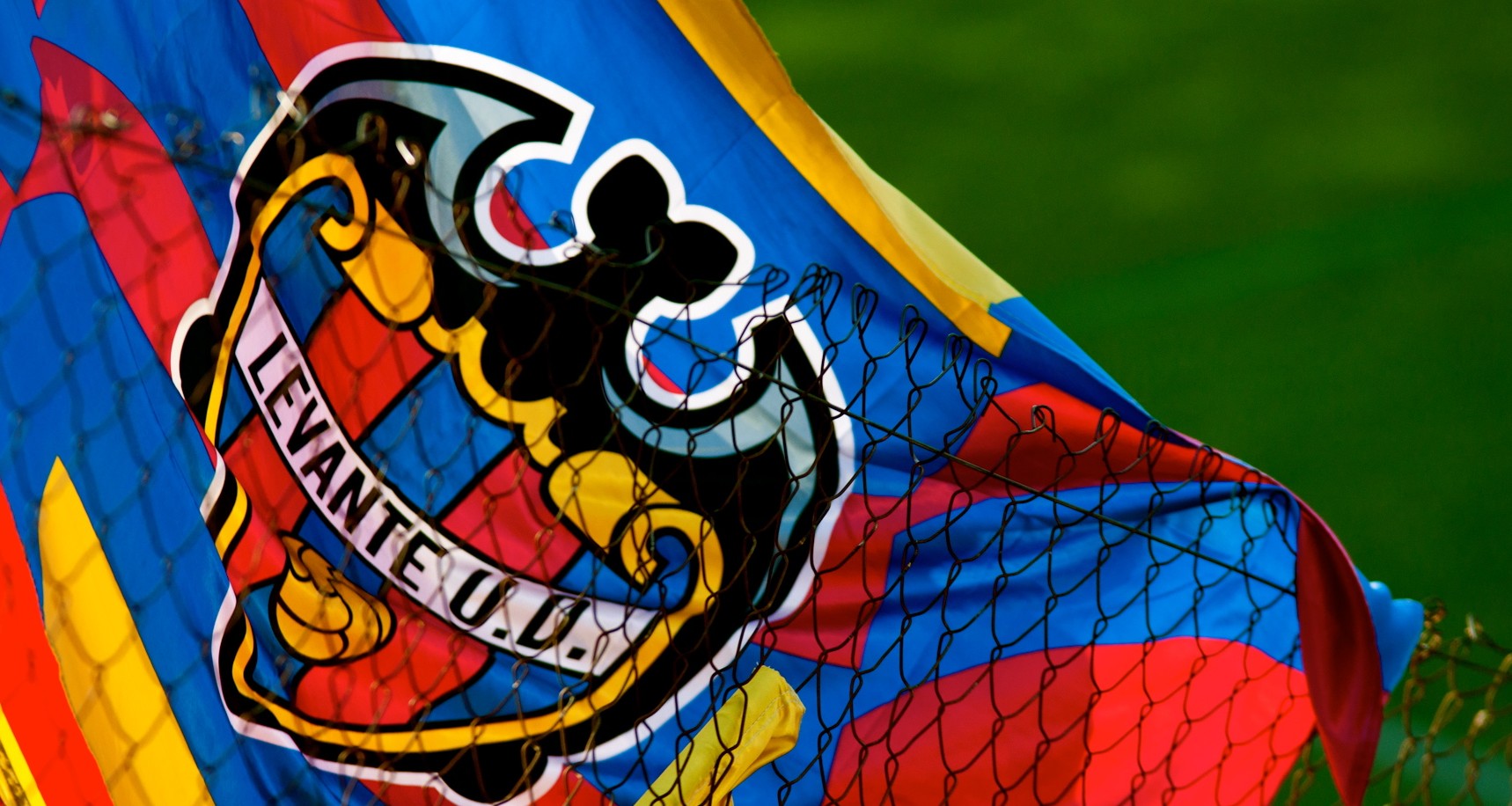
Now let’s be honest. How many of you thought that Levante would be fighting for their first division survival with just two fixtures of the La Liga season remaining? Instead, two favourable results could see the club qualify for European football for the first time in its chequered history.
Founded as Levante Foot-Ball Club in 1909, it originally drew support from the tough working class district of Cabanyal and took its name from the nearby beach. Home matches were played at the tight and basic Camp de La Platgeta, but in 1922 moved to the larger Camp de la Creu, which held 10,000 and was closer to the centre of the city, opening up the potential of new support.
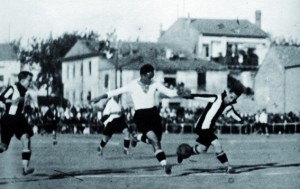 Whilst the rest of Spain started to embrace professional football, Levante remained strictly amateur with a strong focus on youth development. In 1924 its youth team was crowned champions of Spain and three years later these players formed the nucleus of the senior team that won the Valencian Championship of 1927-28.
Whilst the rest of Spain started to embrace professional football, Levante remained strictly amateur with a strong focus on youth development. In 1924 its youth team was crowned champions of Spain and three years later these players formed the nucleus of the senior team that won the Valencian Championship of 1927-28.
The 1930’s saw Levante compete in a regionalised second division that featured teams from Valencia and Murcia, including cross-city rivals Gimnástico. In 1936, the league was suspended due to the outbreak of the Civil War, but unlike many other regions of Spain, football continued on the Republican held east coast, much to Levante’s benefit.
The outbreak of war threw up many weeks of uncertainty especially for Gimnástico, who had close links to the Valencian Nationalist Party. Levante on the other hand was allied with the left wing Spanish Republic. In 1937, Levante, Gimnástico, and Valencia joined five other teams to form the Mediterranean League which was won by Barcelona with Levante trailing in fifth.
The top four teams qualified for the cup competition, the Copa de la España Libre, but Barcelona’s decision to tour the Americas left the door open for Levante to enter. They took the opportunity with both hands and topped the mini league and qualified for the final, beating Valencia by a goal to nil. After the war, Franco’s government declared void all tournaments that were played in the Republican zone and whilst Levante has campaigned for official recognition of its win, the Spanish Parliament officially rejected the proposal in 2007.
As the war progressed, Valencia came under heavy bombardment. Levante’s Camp de la Creu was destroyed and when hostilities ceased and thoughts turned to football, an unlikely alliance was formed. Gimnástico had fallen on hard times during the mid-1930’s and the quality of their playing staff had declined. They did however have a stadium, the Campo de Vallejo which had been their home since 1923. Levante on the other hand, had some of the best players in the east of the country, but with no stadium.
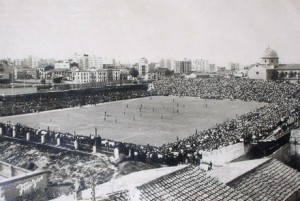 This unholy matrimony of left and right was forged over a two week period in July 1939, the result of which was Unión Deportiva Levante-Gimnástico. Initial signs were encouraging as the club comfortably won its section of the regionalised Segunda, but missed out on promotion in the play-offs. The club’s name was not popular amongst either the dominant ex-Gimnástico’s or the smaller ex-Levante fans, so in 1941 a compromise was found. The club would in future be called Levante Unión Deportiva, but play in Gimnástico’s traditional colours of blue and red striped shirts.
This unholy matrimony of left and right was forged over a two week period in July 1939, the result of which was Unión Deportiva Levante-Gimnástico. Initial signs were encouraging as the club comfortably won its section of the regionalised Segunda, but missed out on promotion in the play-offs. The club’s name was not popular amongst either the dominant ex-Gimnástico’s or the smaller ex-Levante fans, so in 1941 a compromise was found. The club would in future be called Levante Unión Deportiva, but play in Gimnástico’s traditional colours of blue and red striped shirts.
The next twenty years were spent flitting between the Tercera and La Segunda, before Levante earned promotion to the top flight in 1963. Their two season stay in the top flight highlighted two important factors. Levante could attract decent attendances and the Camp de Vallejo was hopelessly outdated, even by 1960’s standards. Two reasonable seasons in La Segunda followed, before the club bid farewell to the Vallejo with relegation to the Tercera.
The site of the old Camp de Vallejo was sold for housing and work started on a new stadium to the north of the city in 1968. Levante moved in with rivals Valencia for the 1968-69 season, but couldn’t escape the grips of the Tercera and was firmly entrenched in the third division when the new stadium opened on 9 September 1969 with a friendly against their cross-city rivals. Named the Estadio Antonio Román after the club’s president who brokered the move, the stadium was far from complete on its opening night, with no roof and the corner stands incomplete.
Work progressed over the next couple of years to complete the bowl and add a strange crooked cantilevered roof over the west side. The stadium was renamed the Nou Estadi del Levante U.D in 1972 and Levante celebrated the completion of the stadium with promotion back to La Segunda. With a capacity of around 38,000 and Levante attracting four-figure crowds, the new ground seemed to be an unnecessary extravagance.
Designed to build on the club’s Primera exploits of the mid-sixties, Levante spent three decades switching between the second, third and fourth levels, never once coming close to a return to the top flight. The best finish 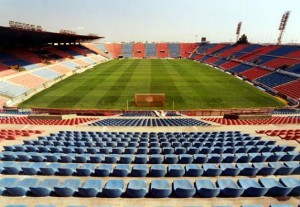 coming in 1980-81 when Dutch great Johan Cruyff helped the club to a ninth place finish in La Segunda. The stadium at this juncture was devoid of colour and with the exception of the handful of matches that featured Cruyff, rarely saw crowds in excess of 10,000.
coming in 1980-81 when Dutch great Johan Cruyff helped the club to a ninth place finish in La Segunda. The stadium at this juncture was devoid of colour and with the exception of the handful of matches that featured Cruyff, rarely saw crowds in excess of 10,000.
In 1999, the stadium was renamed the Estadi Ciudad de Valencia in a deal with the local municipality. The whole stadium was bedecked in bands of red and blue seats and other facilities such as floodlights and the media centre were upgraded.
The past decade has seen Levante win promotion to La Primera on three occasions, overspend on players & wages and nearly go to the wall. Then, at the start of this season, Levante defied the odds and topped La Liga with the oldest and lowest paid squad in the league. It seems appropriate therefore that the club play in one of the oldest and least sophisticated stadiums in the top two divisions. Unchanged since the early 1970’s apart from some seating and some superficial adornments, the Estadi Ciudad de Valencia is a relic of a time when stadiums where built big and basic.
The main feature is the roof over the west side, which is a curious design that seems to defy gravity and logic. It starts off at the back of the stand looking like a conventional pitched roof, but there are no props. Then after 30 feet, the roof turns upwards and spreads wing-like over the seats in the lower tier. The rest is fairly formulaic fare, just an open bowl of seats and three floodlight towers that stand behind the east side. The symmetry of the bowl is however broken at the south end of the ground, where a section of the upper tier is missing.
Is this a section that has been removed amid safety fears? No, quite simply, the club did not own the field adjacent to the stadium and simply built around that wedge of land. La Seleccion has played at the stadium on just the one occasion, but that didn’t pass without incident. Playing Scotland in September 2004, the floodlights failed after 57 minutes with the score at 1-1 and the match was abandoned.
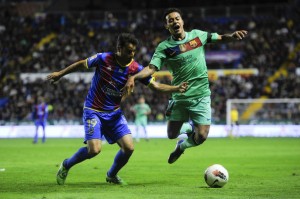 Levante would be better served by a modern, more compact stadium. Plans were in place for a return to their original dockland suburbs and a 40,000 seat arena. As always, this is dependent on raising the necessary funds and the sale of the land on which the current stadium stands is central to that. Enthusiasm for the project has cooled after the clubs protracted financial woes and if they need a reminder of how a stadium project can go belly-up, they only need to look a mile or so south at the Nou Mestalla project to receive a reality check.
Levante would be better served by a modern, more compact stadium. Plans were in place for a return to their original dockland suburbs and a 40,000 seat arena. As always, this is dependent on raising the necessary funds and the sale of the land on which the current stadium stands is central to that. Enthusiasm for the project has cooled after the clubs protracted financial woes and if they need a reminder of how a stadium project can go belly-up, they only need to look a mile or so south at the Nou Mestalla project to receive a reality check.
So Los Granotes or the frogs as they are affectionately referred to, will carry on at the Estadi Ciudad de Valencia for the foreseeable future. Pay them a visit, but don’t turn up expecting comfort and corporate entertainment, just enjoy the current fairy tale where this frog has turned into a prince.
_____________________________________
For more on the history of Spanish football and its stadiums, visit Chris at Estadios de Fútbol en España
Follow @icentrocampista
Related Posts
4 Comments
You must be logged in to post a comment Login


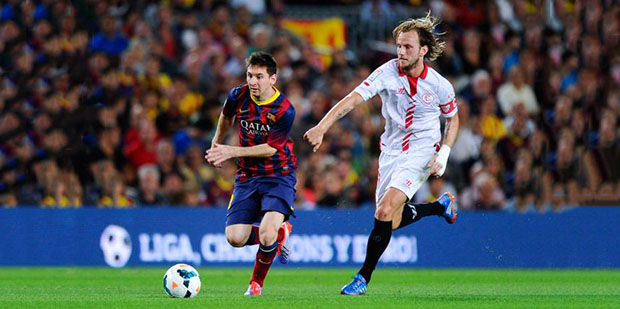
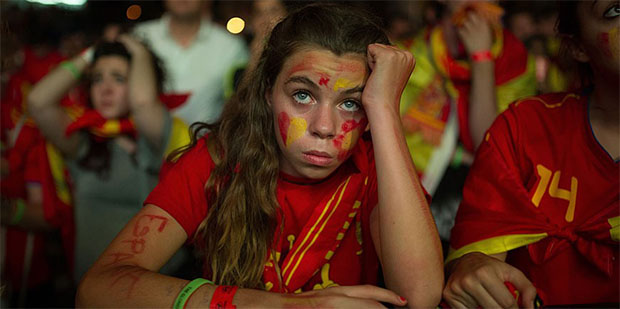


Pingback: Spanish Fairy Tale – The frogs look set to challenge football’s royalty – El Centrocampista
Pingback: Premium Frog Fairy